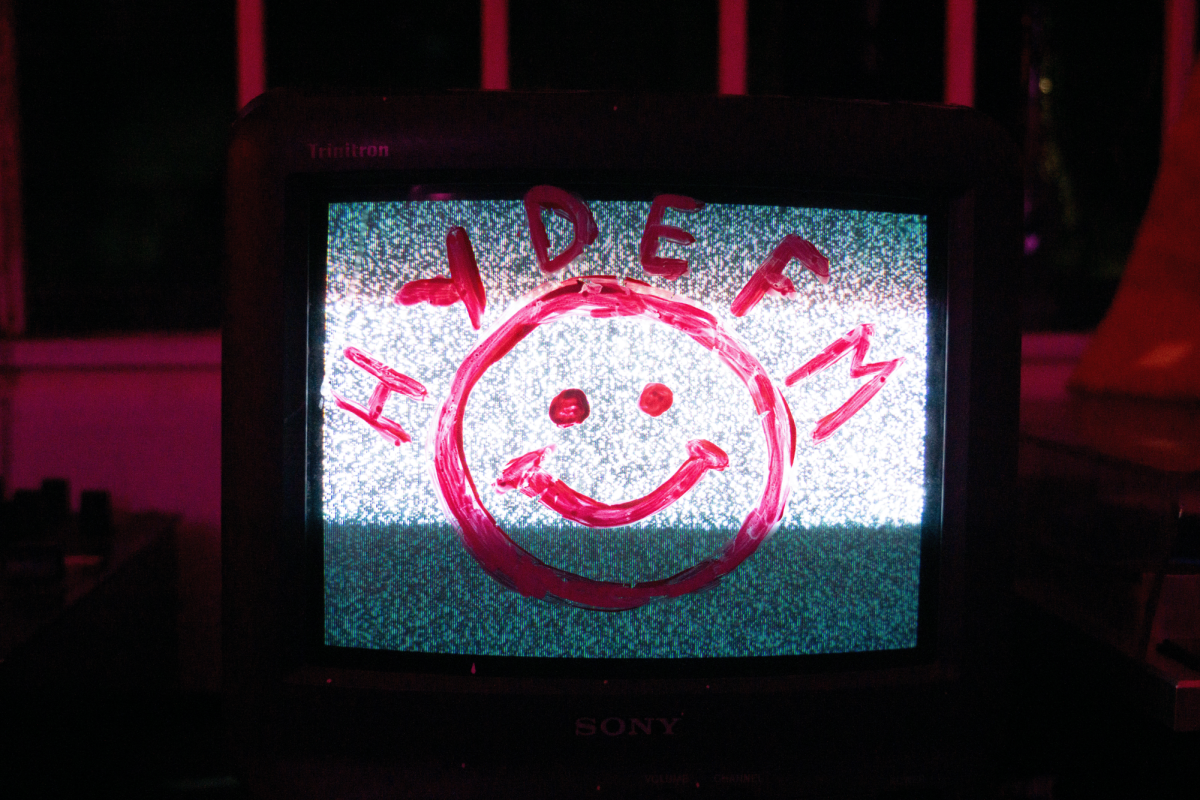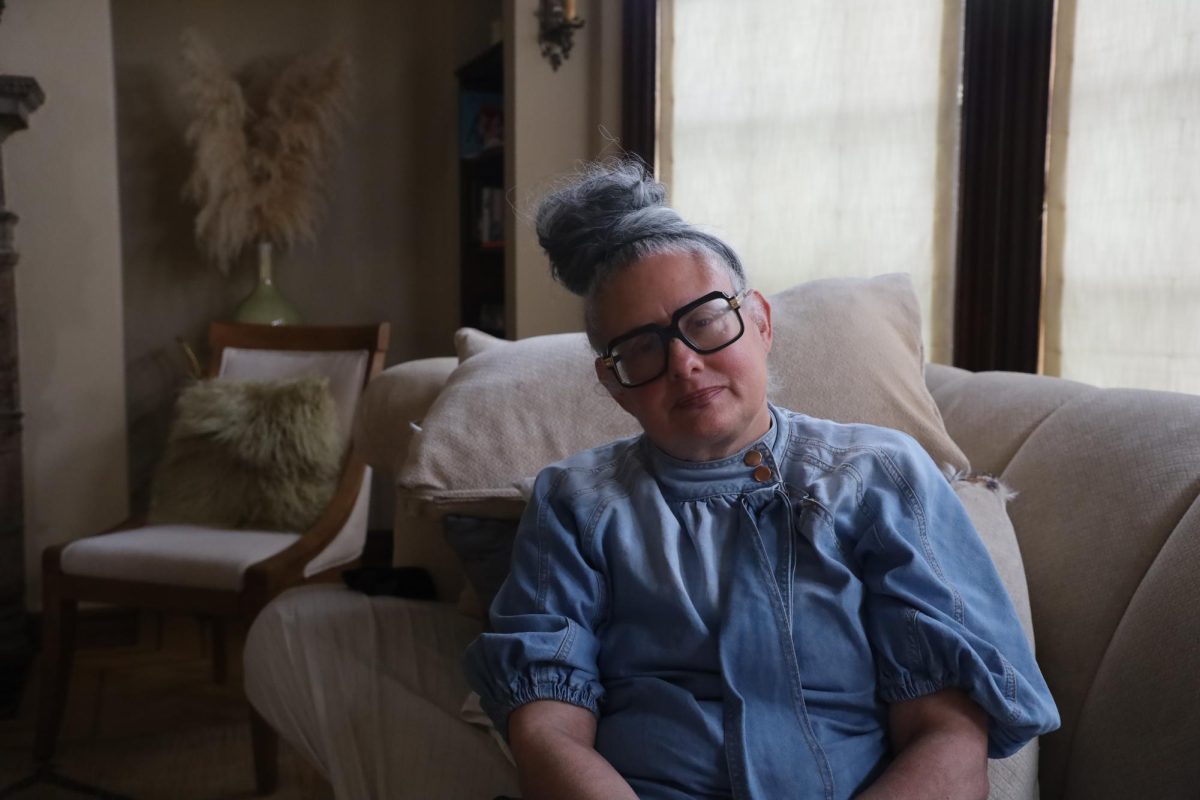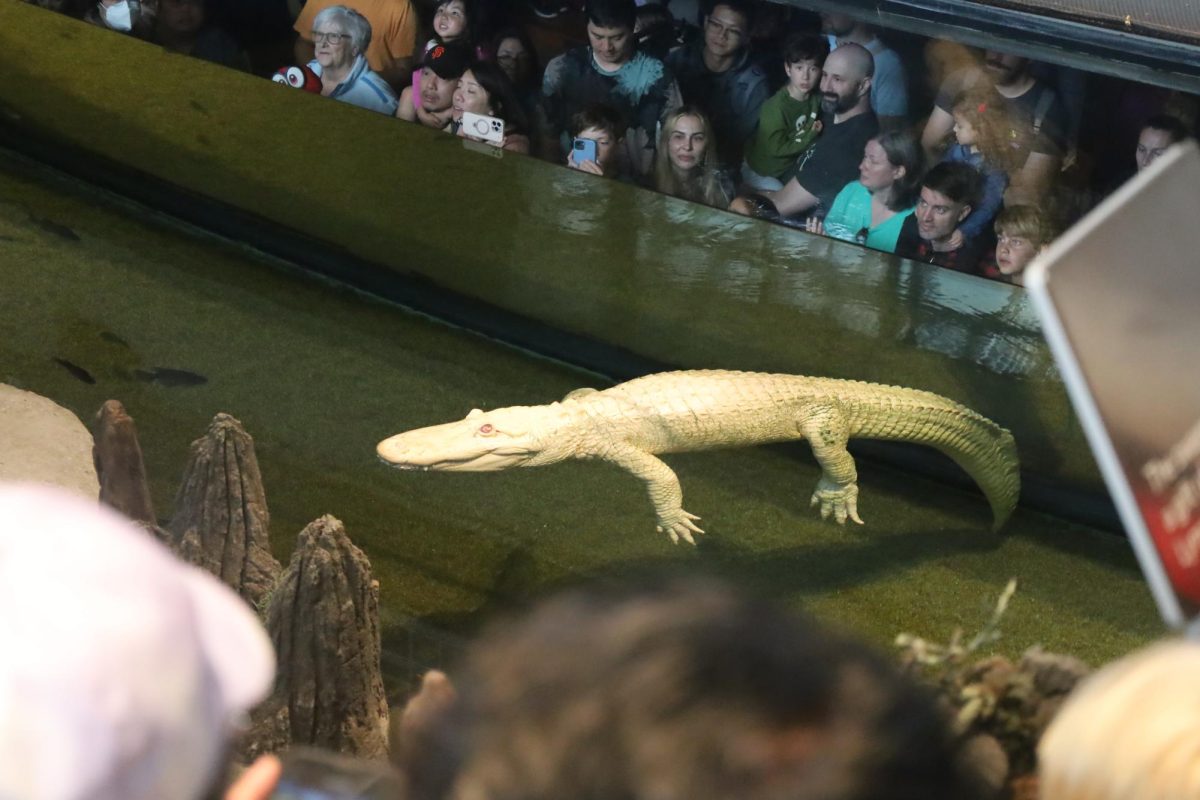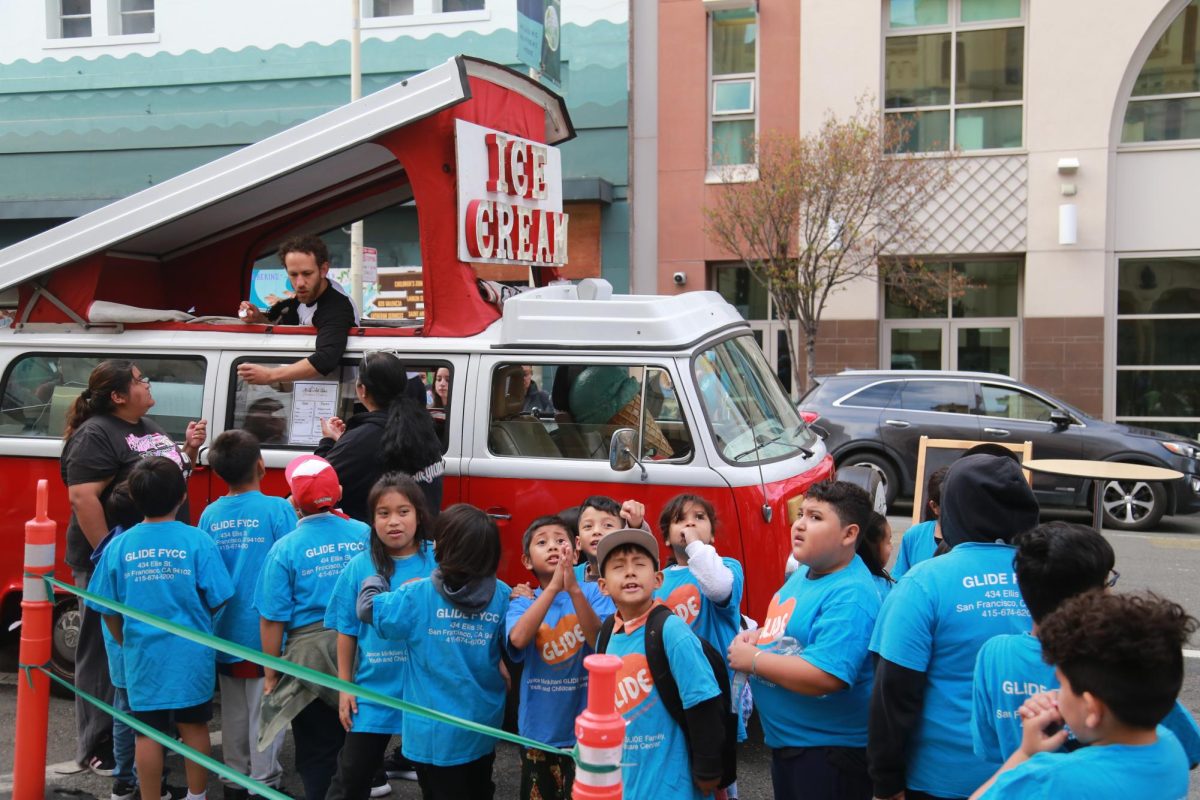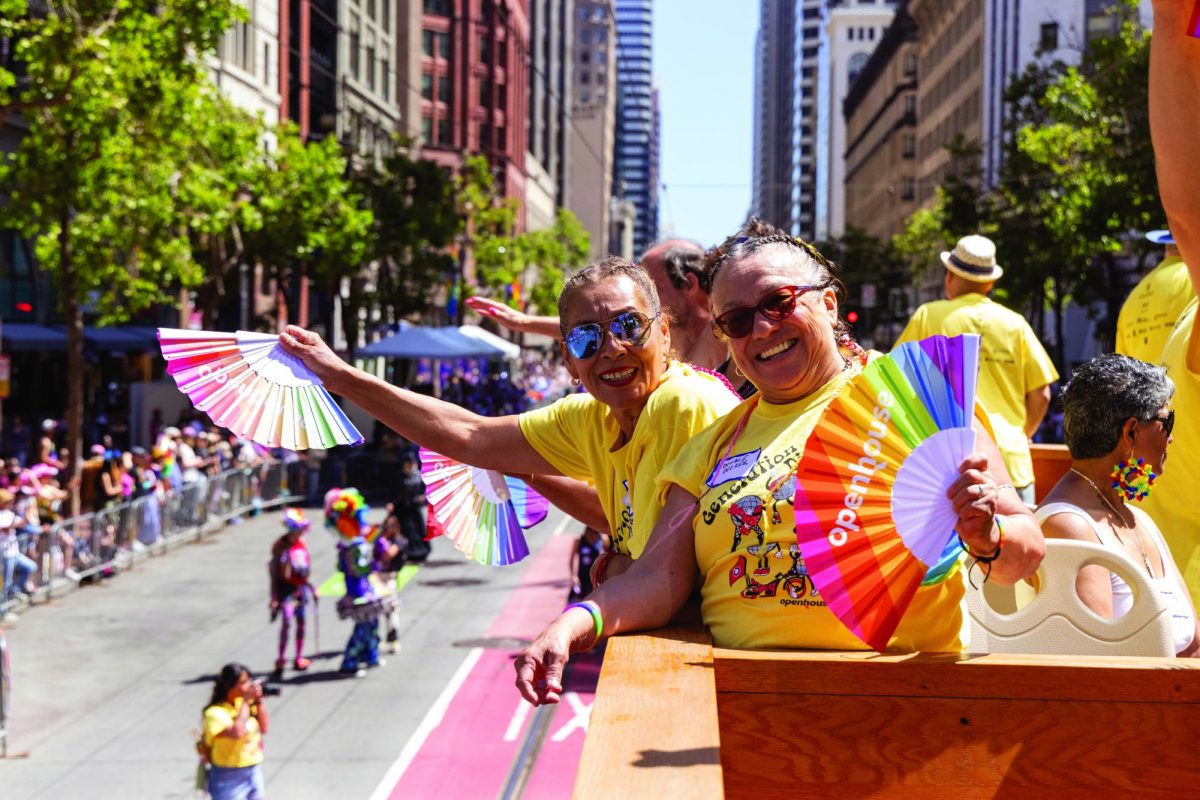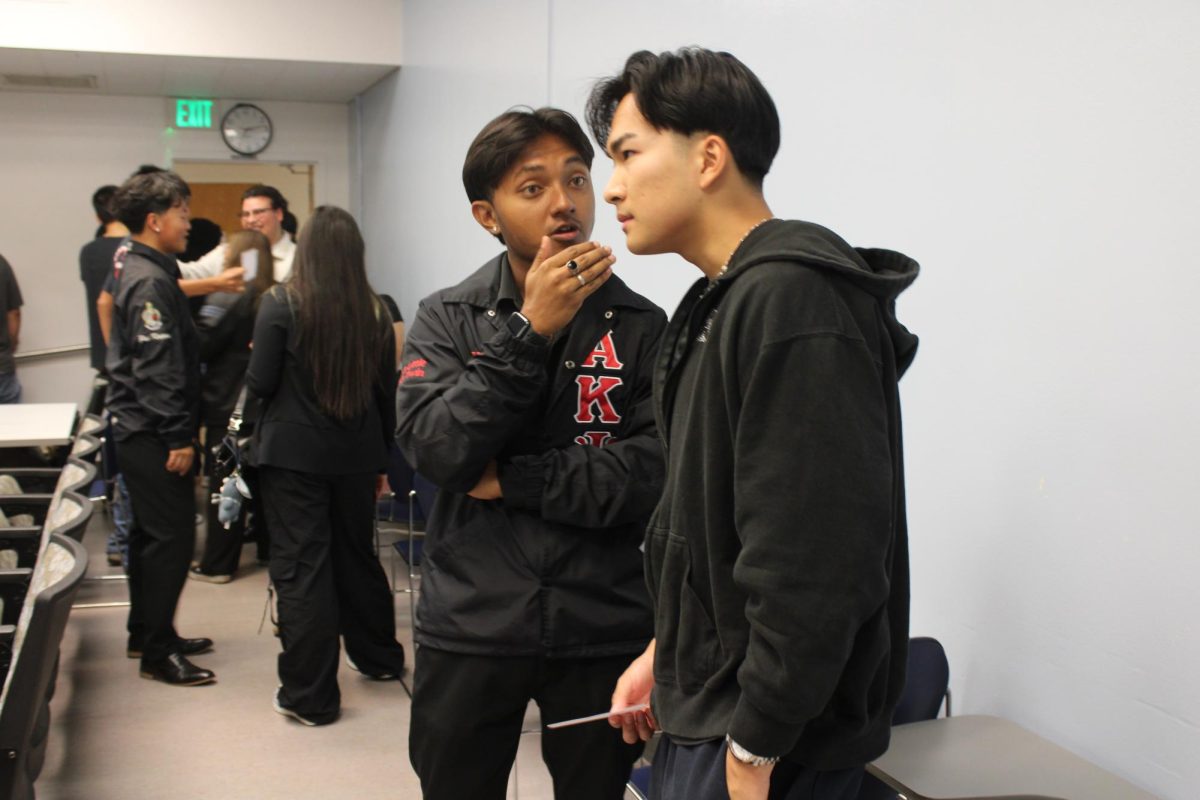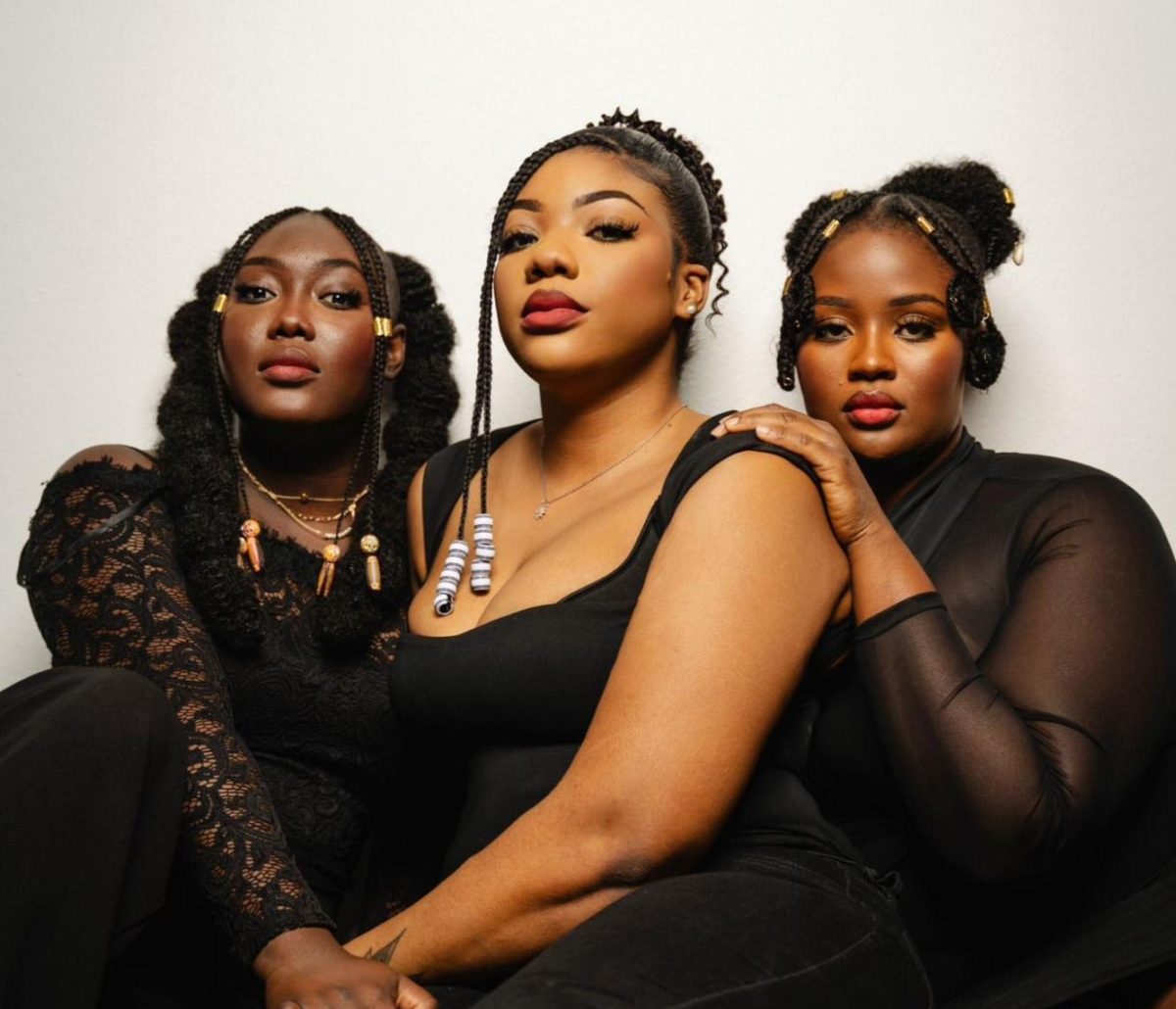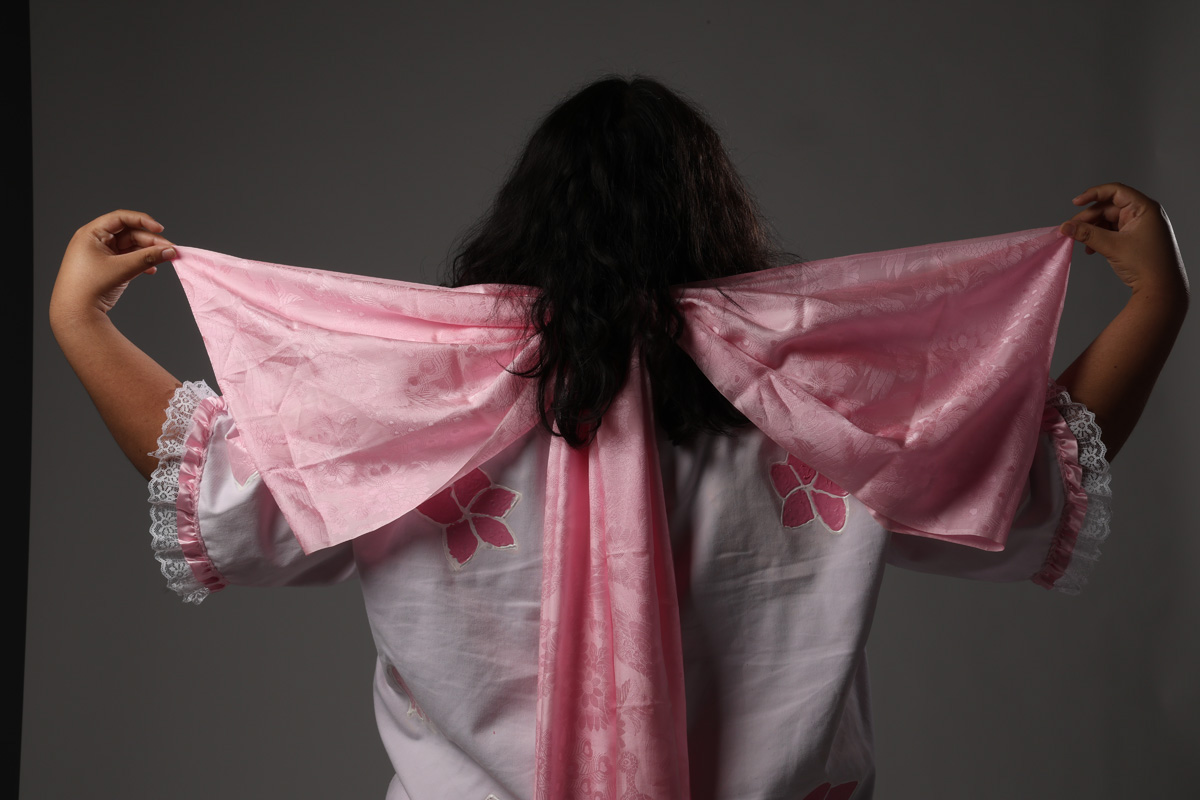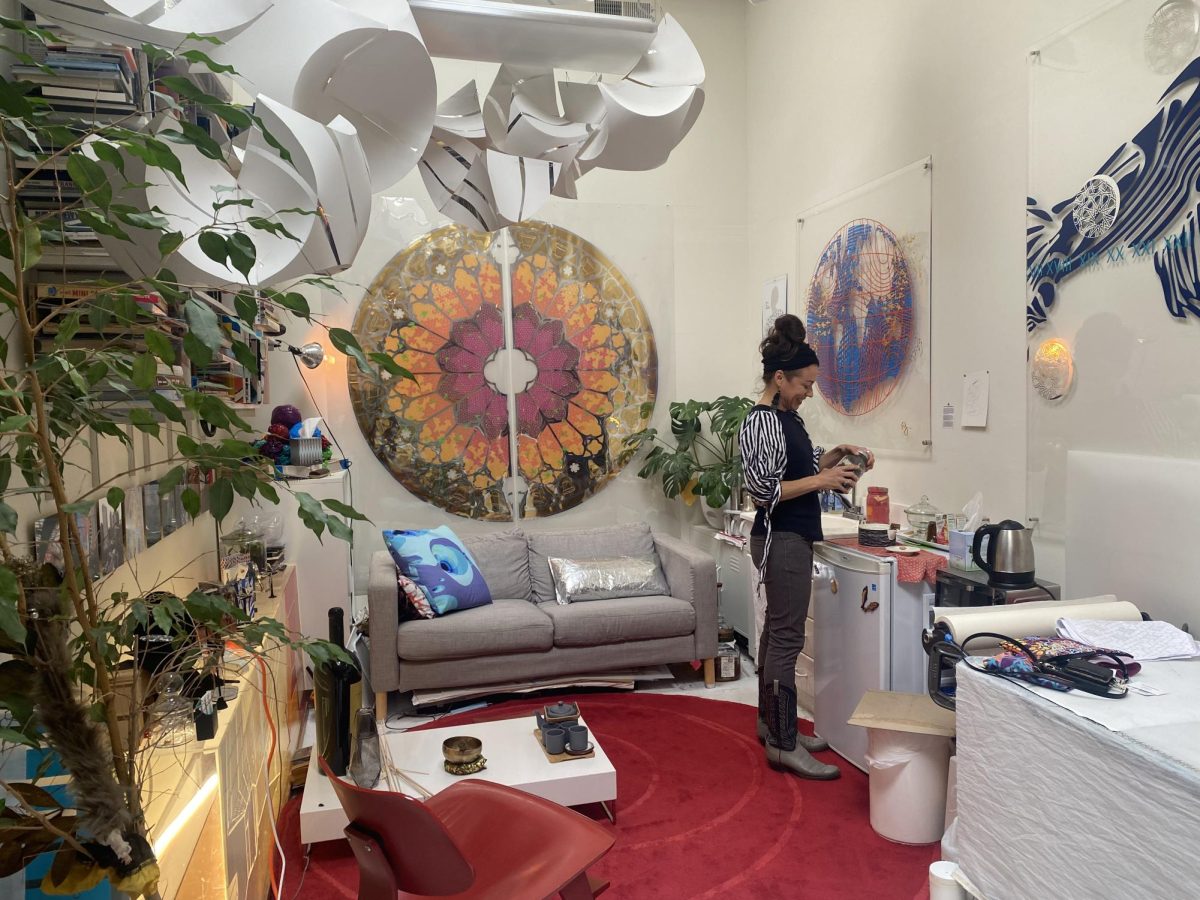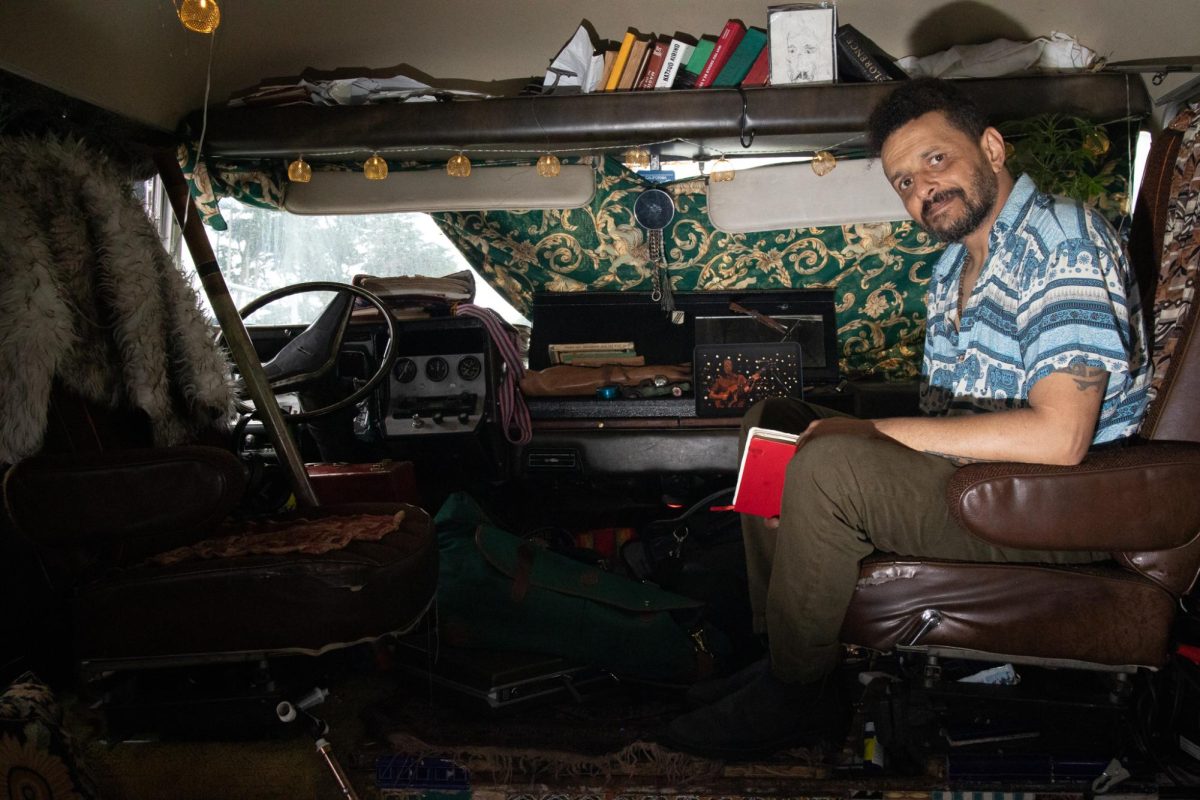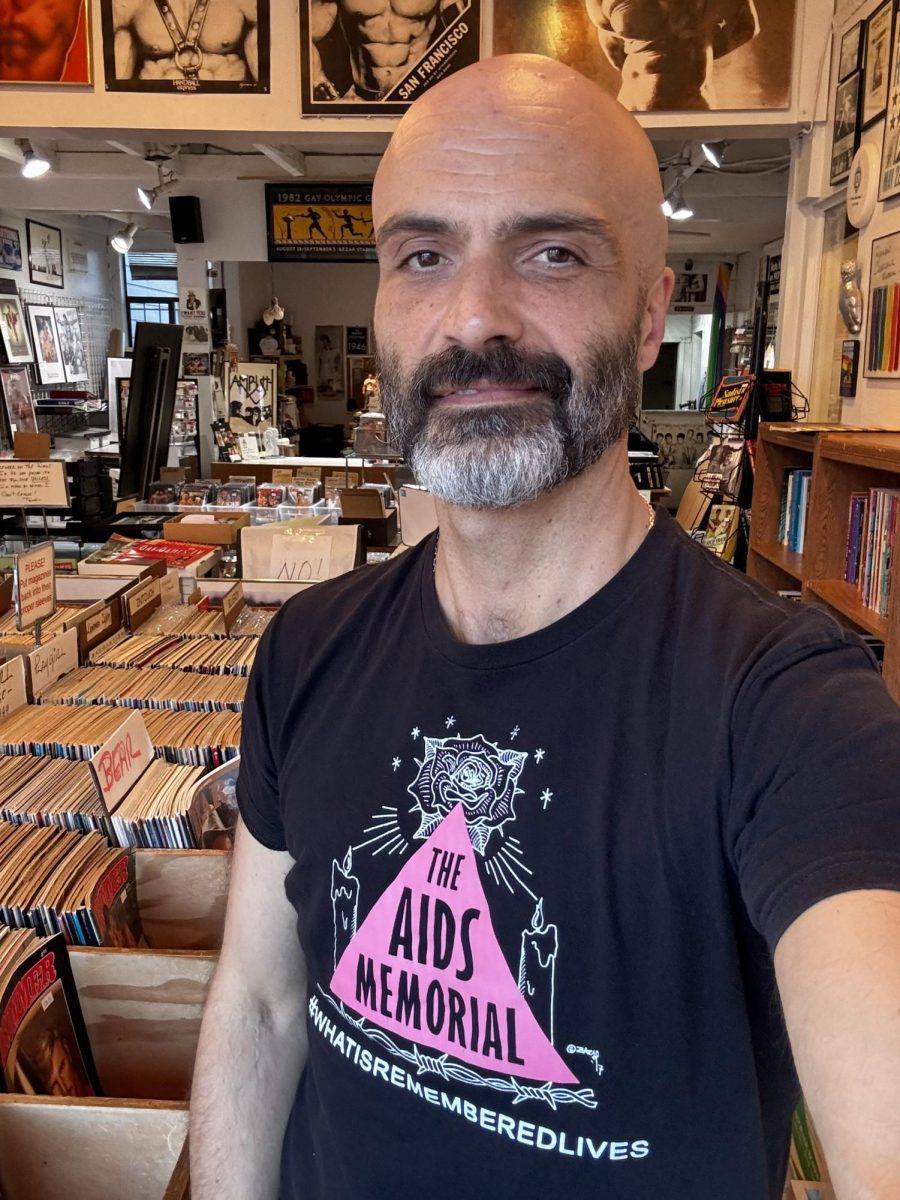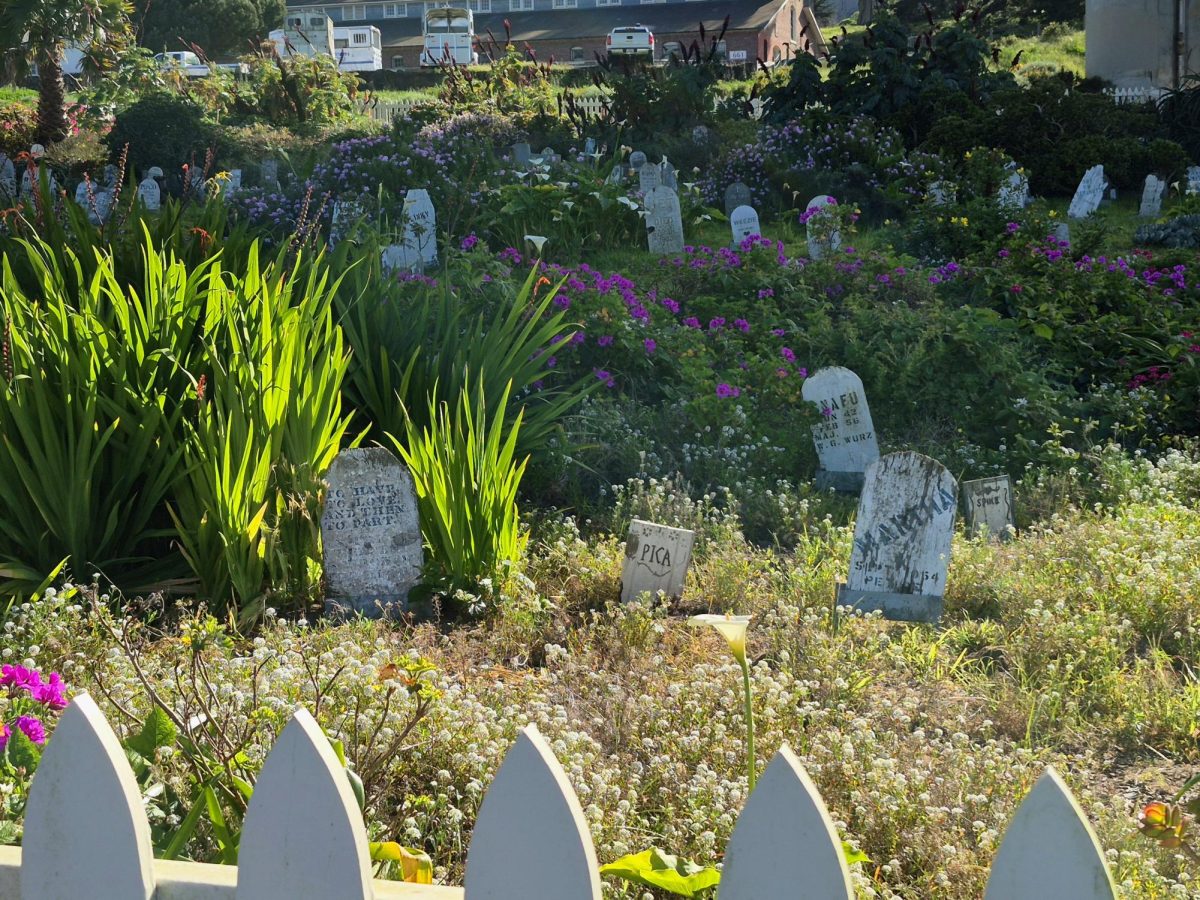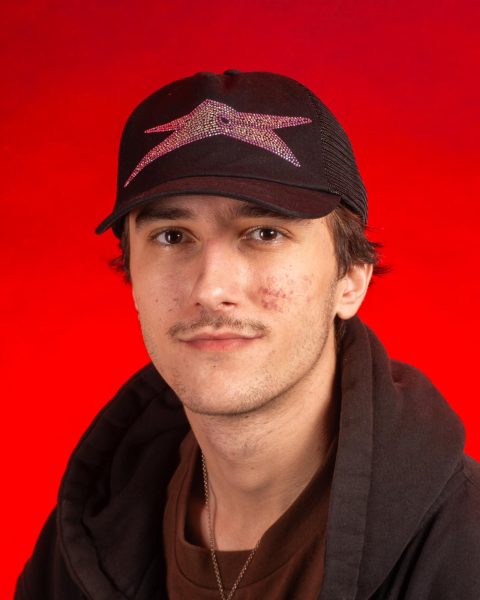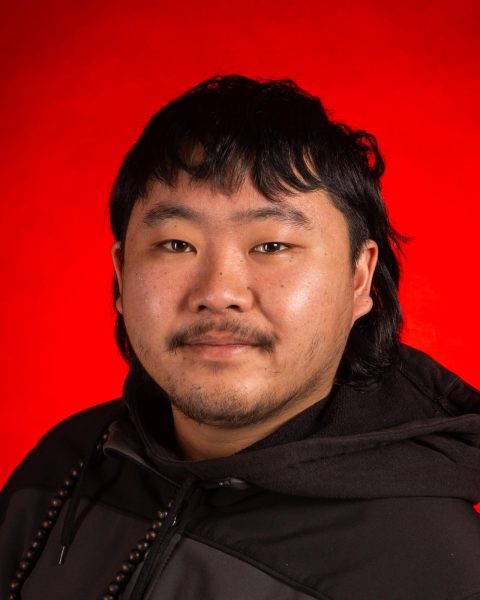In a baby blue jumpsuit and orange beanie, Denis Makhlin is dressed as a sailor from Wes Anderson’s “The Life Aquatic with Steve Zissou.” He grabs the microphone and reiterates the name of the DJ to the clowns, nuns, zombies and vampires who packed themselves into the two-car garage-sized warehouse for HydeFM’s Halloween party. “Jooosh Cheeeooon!”
Cheon, owner of Dark Entries Records, was dressed in the bulbous teased wig, tight pink sweater vest and caterpillar mustache of Freddie Mercury from Queen’s “I Want to Break Free” music video, as he played a drum and bass mix of Dolly Parton’s “Jolene” to the delight of all the costumed partygoers. The other DJs of the night were Mishka, dressed as a medieval knight, and Angela Ruins, dressed as Little Red Riding Hood — both resident DJs at HydeFM.
HydeFM is a San Francisco community-based multi-genre online radio station that was started in 2019 by Denis Makhlin and Luis Castillo. Over the last few years, they’ve grown to over 2,500 weekly listeners and currently feature 29 resident DJs, with dozens of guest DJs coming through every week.
Part of the motivation behind the origin of HydeFM was to create a space where artists felt welcomed and encouraged no matter how new they were to the game. Through their weekly programming and live events at bars, clubs and warehouses, HydeFM has grown from a radio show hosted in a college dorm by two friends to a thriving local music scene.
“The community in San Francisco is like no other. People can say, ‘Oh, it’s just these two guys who started it,’ but HydeFM has become so much bigger than us,” said Makhlin. “It’s everyone that’s helped us, whether it be volunteering and helping us make videos, or every single guest that plays. All the residents — they are the ones who made it bigger than what it originally was.”
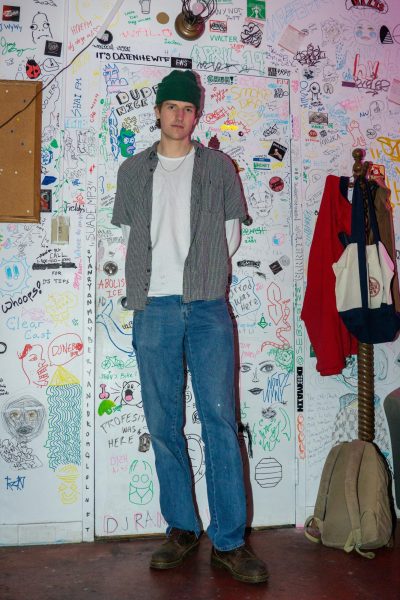
Makhlin was introduced to his love of radio through his sister, a former DJ at KXLU, Loyola Marymount University’s radio station. When he was in high school, she’d tell him to make a playlist and bring him into the station to play it live on air. Makhlin loved the station’s freeform curation policy, which encouraged DJs to play whatever sort of music they were into. For Makhlin, these visits to KXLU cemented the idea he was a born radioman; so focused on working in the industry, he only applied to colleges with radio stations.
“She let me play some music and we talked on the mic and I just fell in love with it. When I was looking for schools I wanted to go to, I was really just basing it off of what radio stations they had instead of anything else,” Makhlin said.
After getting waitlisted and denied from all of his top choices, Makhlin found himself knocking on the doors of SF State’s very own KSFS Radio building. He entered SF State as an undeclared major and switched several times before landing on visual communication and design, unaware that participation in the school radio is contingent on your major. To his dismay, the process of getting on the airwaves was much more restrictive than he had hoped. Only Broadcast and Electronic Communication Arts majors are allowed to work in KSFS, and there are several prerequisite classes they must take before they can actually work with live programming.
“The vibe was awful honestly. It wasn’t welcoming and I don’t like that. Music can have a very judgmental face […] it needs to be more welcoming,” Makhlin said.
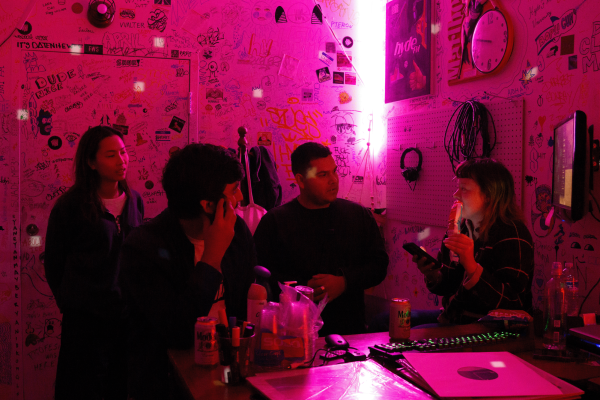
After not having any luck at KSFS, Makhlin reached out to several other community stations in hopes of getting involved but was met with either rejection or radio silence. A combination of being off put by how inhospitable some facets of the music industry were and the ever-present burning passion for radio inspired Makhlin to start his own online community radio station with Luis Castillo, a friend he met working at the since-closed Firepie Pizza.
Makhlin and Castillo quickly progressed beyond just coworkers and instantly bonded over their love of artists such as Animal Collective and John Moss, as well as their shared experience of organizing and running concerts in high school. The two also moved to San Francisco from Southern California and bonded over relocating to and from the same place.
BUILDING THE DREAM
Makhlin brought the concept of HydeFM to Castillo, and the two got to work.
“I came to Luis with the idea ’cause I’m like, ‘This is the person I want to do this with.’” said Makhlin. “We both just formed this love together for it.”
HydeFM’s first show was in April 2019; it was broadcast from Castillo’s dorm room at the Academy of Art University and racked up a whopping 14 listeners. Whenever resident assistants would knock on the door and tell them to be quiet, Castillo would step out and remind them that as a music production major, he was simply doing his homework.
After two months of running HydeFM shows out of either Castillo’s dorm or Makhlin’s room at his mom’s house, the pair moved into an apartment in Daly City that served as the HydeFM headquarters until moving into their current location: a small, densely decorated studio space in a renovated bank in the Mission District in December 2021.
Up until this point, the only equipment HydeFM had was a pair of cheap turntables and a simple DJ controller. The big move also coincided with another opportunity presented to Makhlin through Anna Rulloda, a previous DJ at California Polytechnic State University, San Luis Obispo’s KCPR radio station.
Rulloda helped enroll HydeFM in the fiscal sponsorship Intersection for the Arts, which meant that every dollar they made from shows or donations would be matched by large Bay Area-based companies. HydeFM makes money from ticket sales of live shows and online donations from listeners, but all of the money goes back to the artists or overhead costs. The matching program meant that they could compensate their artists and also save up for better equipment.
CREATING COMMUNITY
Currently, HydeFM has 29 resident DJs that play an eclectic array of bouncing beats, and four to five days of programming per week. Part of HydeFM’s mission is to make the Bay Area music scene more approachable and accessible.
“I always compare it to going to a record store. You sometimes feel really intimidated because you see a lot of vinyl-heads and the owner’s kind of like, whatever, and you’re just kind of like, ‘I don’t want to be pulling some random records’ and we just have basically the opposite motto at HydeFM where we welcome all music. And even if you don’t know how to DJ, we still want you to come and play music on your phone or your laptop.” Makhlin said.
Mustafa Popal is one of the two hosts of Tribe Jazz, a monthly show on HydeFM, and he’s been DJing since 2000. He recognized the power and control that a DJ has with their audience and wanted to know what it’d be like on the other side of the turntables. Although the show is called Tribe Jazz, Popal’s definition of jazz is very nontraditional, which lines up well with HydeFM’s eclectic curation policy.
“Our understanding of jazz is very flexible. We hear jazz both as a ‘genre’ but [also as] an attitude, a philosophy, an exercise in different sounds — things that aren’t traditionally considered jazz, but the ethos of jazz, the attitude of jazz, the experiment of jazz, the risk-taking of jazz,” said Popal.
As HydeFM grew, Makhlin and Castillo realized that running the radio shows after 14-hour work days was unsustainable. They reached out on social media for volunteers and were met with a surprising number of applications. Despite not being paid work, volunteering at HydeFM is a great way to become familiar with the local music scene and immerse yourself in the community.
Jabril Rice, HydeFM’s newest volunteer, recently moved to San Francisco from North Carolina and wanted to ingratiate himself in the local scene.
“Music has always been a big part of my life and I was looking for a community that would continue to build that, and [HydeFM] just sounded like the perfect opportunity for me to contribute to a music community, but also [to] create a sort of family,” Rice said.
Comparing San Francisco’s music scene to that of North Carolina and his hometown in Ohio, Rice appreciates the experimental quality of musicians in San Francisco.
“Every weekend I hear something completely different than I heard the night before, and I think that’s the most exciting as a musician,” said Rice. “It inspires me creatively and it inspires me to branch out with what I’m DJing, but it’s also just like fun and nice to see people so passionate about whatever type of genre or type of music that they’re doing.”
GAINING EXPOSURE
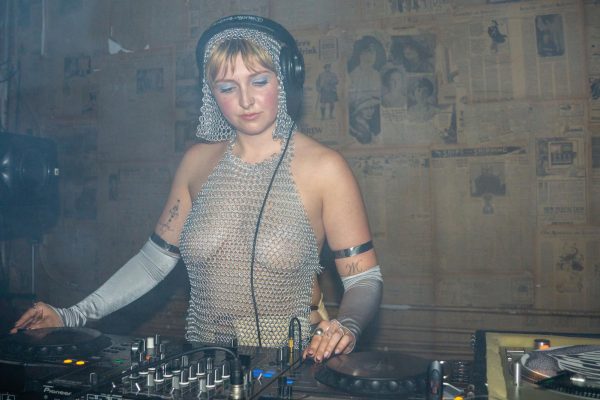
Francisco, California. (Ryo Kojima/Xpress) (Ryo Kojima)
For artists in the Bay Area, HydeFM can be a stepping stone for the next moves in their careers. Several DJs from the up-and-coming crew Vitamin1000 even played their first sets on HydeFM.
Vertigo is one such artist who got her start at HydeFM, and she’s now playing some of the largest nightclubs in the city. There is a degree of prestige, no matter how local, that is affiliated with playing a set on HydeFM. For new artists, getting these few crumbs of clout can be instrumental in furthering their careers.
Radio play is obviously beneficial for an artist’s exposure and popularity, but HydeFM offers more than just that to its residents. The kindred spirits that gather under the pink lights of the studio provide a sense of community that, to some residents, DJs, are more valuable than financial or commercial advancement.
“I’m not looking for [HydeFM] to give me something. That creates kind of an exchange relationship, a capitalist relationship,” Popal said. “Just the ability to be able to share music and build community, like meeting [Earl Biggers, the other half of Tribe Jazz]. That’s what I was excited about, just being able to share sound and then build a community of like-minded folks that you can fuck with.”
Christopher Alam, who hosts the show Taqsim Taxi under the DJ name Hakim every month before Tribe Jazz’s set, shares Popal’s value of the camaraderie that HydeFM provides.
“Dude, the community is great. My brothers at Tribe Jazz, we come here, we drink beer, we play music, it’s a good time,” Alam said. “Finding new music, finding new people, going to cool parties, it’s a very nice community resource.”
For new artists who are trying to break out onto the scene, this sense of community can alleviate some of the nerves that come with trying to market yourself. Trying to make a name for yourself in a scene can be hard enough — so why do it alone?
“When I came [to San Francisco], I was really reluctant to even try to do music because it’s kind of scary […] when we started this and people started coming on, it’s a way for us to keep it so casual that you don’t have to really overthink it,” said Castillo. “You don’t have to be scared. It’s just a place for you to start whatever journey you’re on in music.”
In addition to the benefits of radio play, the live shows that HydeFM has organized at bars, clubs and warehouses have helped bring the community together in a much more tangible way. Since Makhlin and Castillo both had experience putting on shows in high school, it was a natural decision to have live shows in addition to radio programming.
REKINDLING THE SF MUSIC SCENE
Part of HydeFM’s mission is to destroy the notion that San Francisco’s music scene can’t go toe-to-toe with those of other major cities, such as Los Angeles’ or New York’s. The Bay Area’s era of ‘90s rave culture has long faded, and Makhlin feels that San Francisco’s music scene hasn’t gotten its proper credit since those bygone days. Packing out warehouses like they did this Halloween is the most effective way to demonstrate to the world that San Francisco’s music scene is alive and well.
“[San Francisco] is never on the same pedestal as other major cities in terms of arts and culture. It used to be but not as much anymore. Having that here and having this living example of the arts and culture in the Bay Area — it feels amazing for sure,” said Makhlin. “It’s really rewarding to just sit in the studio and watch people meet each other for the first time.”
Collectives, crews and communities such as HydeFM that have popped up over the last few years are helping to change that narrative and put the spotlight back on San Francisco.
“I think that we are taking a step forward in terms of establishing San Francisco as another hub for music and art, because I think at some point, maybe it wasn’t as lively and it wasn’t as thriving. So I’m happy that now you see all these different collectives and different promoters and different shows coming up,” said Castillo.
“People wanna come and stop in San Francisco and they wanna make sure that they come here on their tour or when they’re DJing, you know. We get a lot of people that wanna come back to the city and that’s such a good feeling.”



